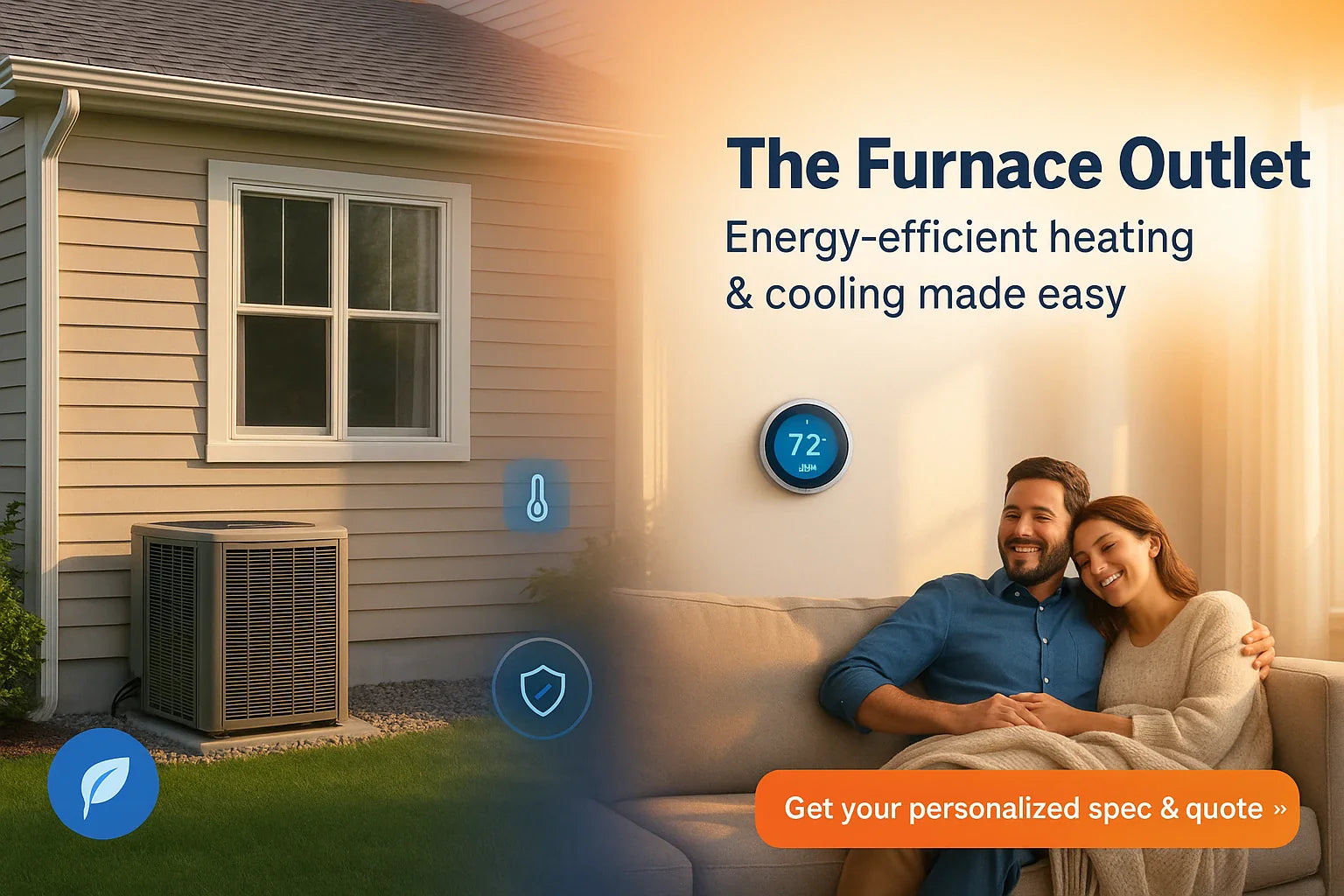Why Climate Zone 3A Changes the Rules
In 3 A, you fight both sensible heat and relentless latent load. Oversize the tonnage and the coil short-cycles, leaving humidity to climb; undersize it and you lose temperature control during 95 °F/75 °F design days. ASHRAE data peg peak grains of moisture at 140 grains/lb, so dehumidification capacity should be part of your load calculation—not an afterthought. Use the latent/sensible split from Manual J to select an evaporator whose SHR matches the zone profile.
When humidity regularly exceeds 60 % RH, spec a thermostatic expansion valve (TXV) coil paired with a variable-speed air handler such as those in our R-32 air-handler line. The lower CFM per ton extends coil dwell time, squeezing out more moisture.
Brand Tiers & Price Bands
Field numbers show three budget categories:
|
Tier |
Typical Installed Price (2 – 3 ton) |
What You Get |
|
Value – Goodman, Rheem, York |
$3 k – $5 k |
PSC blower, 14–15 SEER2, 10-yr parts |
|
Mid-Premium – Trane XR, Carrier Comfort |
$5 k – $7.5 k |
ECM motors, 16–18 SEER2, quieter cabinets |
|
Top-End – American Standard AccuComfort, Carrier Infinity |
$7.5 k – $12 k+ |
Inverter compressors, 20 SEER2+, communicating controls |
Budget systems are fine for rentals or ≤1,500 ft² homes. Premium gear pays back where run-hours top 2,000 cooling hours/year—common from Houston to Jacksonville. Browse R-32 condensers to compare coefficient of performance (COP) curves before committing.
Load-Sizing: From Square Footage to Sensible BTUs
Rule-of-thumb tonnage (e.g., 400 ft²/ton) dies quickly in 3 A. Start with Manual J, then adjust for infiltration and duct location. Attic ducts can add 0.3 ton per 1,000 CFM because of radiant gain. A blower-door test tells you if air-sealing could offset equipment cost. For example, shaving 4 ACH50 down to 2 ACH50 can drop required capacity by ~0.5 ton on a 2,400 ft² plan saving $600 on the condenser alone.
Match coil size to latent demand don’t exceed furnace plenum limits. Our sizing guide walks through delta-T verification once the unit’s charged.
SEER2 Economics: Payback Windows
Going from 14.3 SEER2 to 20 SEER2 cuts kWh roughly 28 %. At $0.14/kWh and 2,500 cooling hours, that’s $230/year savings on a 3-ton system. If the upgrade costs $2,500, simple payback lands near 11 years just inside compressor life expectancy. Incentives tilt the math: federal §25C credits knock 30 % (max $600) off qualifying units, while many utilities stack $150–$400 rebates. See our HVAC financing options if front-loading the spend strains cash flow.
Labor, Ductwork & Electrical: The Sleeper Costs
Installation labor runs $1,200 – $2,000 for the average retrofit, but in 3 A the ceiling can rise: attic access, low crawl spaces, and mold-remediation add crew-hours fast. Duct adjustments ($12–$20 per linear foot sealed and insulated) can outweigh equipment savings if ignored at bid time. NEC 2023 now mandates AFCI/GFCI breakers for most HVAC circuits budget $250 – $450 for the service panel upgrade.
Explore package solutions where both coil and furnace ship factory-matched, e.g., R-32 packaged systems, to cut field time.
Heat Pump vs. Dual-Fuel: 15-Year Cost Map
Modeling with DOE RESFEN (3 A weather file, 3,200 ft² home) shows an HSPF2 = 8.1 heat pump beats a 92 % AFUE gas furnace + 14 SEER2 AC combo by $1,100 in NPV over 15 years even before carbon pricing. The crossover temperature (~35 °F) rarely hits in 3 A, so strip heat sees minimal run-time. For installers, note that R-32 split heat-pump packs ship with factory-charged invert-scrolls, simplifying vacuum and charge.
Enable extended-range defrost logic to avoid nuisance ice in Gulf-coast humidity. Most inverter boards let you lengthen termination temp sensors to 55 °F instead of 47 °F.
Smart Thermostats & Zoning: Control Equals Comfort
Zoning dampers add roughly $900 per zone but can slice temperature imbalance from ±4 °F to ±1 °F. That’s critical in two-story builds where solar gain hammers the second floor. Tie zones to a smart stat that supports dynamic staging—e.g., Carrier Infinity Touch or open-protocol Ecobee for furnace-agnostic installs. Retrofitting? Wireless dampers from Honeywell let you avoid drywall surgery. Link the system to our design-center service for load recalibration after commissioning.
Moisture & IAQ: Beyond MERV Ratings
In 3 A, coil temperatures linger near dew point; ignore IAQ and you invite bio-growth. Upgrade to MERV 13 pleated filters and spec a return plenum pressure <0.3 in w.c. to protect blower wattage. Consider an enhanced dehumidification cycle: slow evaporator fan 30–40 % for 6-minute increments when RH >55 %. Pair with UV-C lamps (≥180 mJ/cm²) to suppress microbial colonies. For allergy clients, reference our advanced filtration kits.
Life-Cycle Math: NPV vs. Straight Payback
Professionals use Net Present Value at a 3 % discount rate to score options. Example: A $10 k 18 SEER2 system saves $300/year over baseline; NPV over 15 years = $10 k – ($300 × 11.94) = $6,418 cost of ownership. Compare that against a $7 k 14 SEER2 (NPV = $7 k – $0 = $7 k); the higher SEER2 actually wins. Spreadsheet template available in our help center.
Factor filter and UV-lamp replacements—~$90/year—to keep IAQ upgrades honest.
Spec-Checklist & Permitting: Pass First Inspection
Local jurisdictions in 3 A require:
-
Manual J, S, and D printouts on-site.
-
Permit fees (~$75–$250).
-
Final static-pressure report ≤0.8 in w.c. total external.
Use trap primers on condensate drains to satisfy plumbing crossover codes. Document a nitrogen sweep during brazing; inspectors increasingly ask for proof to avoid internal oxidation. Download our full pre-inspection checklist inside the HVAC tips.







